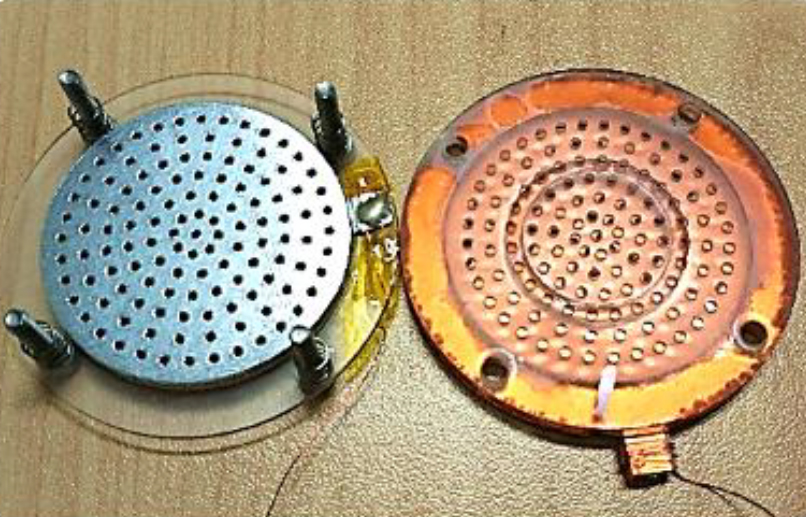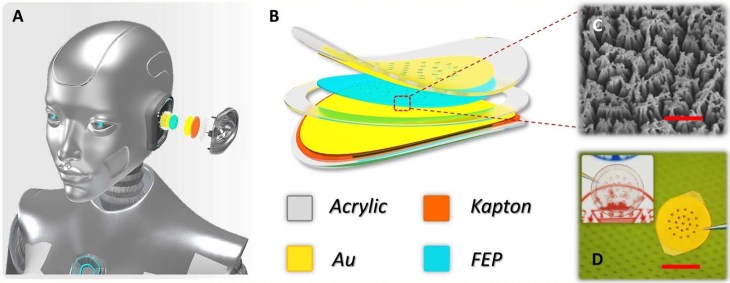The trouble with microphones is that they don’t just hear — they have to listen. Powering the mic and its signal processor means using energy, and energy means a battery, and a battery means charging. This new microphone-like system hears more like the way our own ears do, requiring little or no power, and could help fill the world with voice-responsive machines. (If that’s something we really want.)
The device is called a “triboelectric auditory sensor,” and it works via what’s called the triboelectric effect — essentially when two surfaces rub together and create a charge. They’re still trying to figure out why this happens, but what matters to engineers is that it happens reliably.
Triboelectric nanogenerators have been around for a few years, creating power by having two compatible materials interact with each other at super-small scales. While they’re tiny and highly efficient, they don’t actually produce a lot of power. Researchers from Chongqing University found that, fortunately, you don’t need a lot of power for the purposes of detecting sound.
Our own ears have what’s called a cochlea inside them, a sort of long sealed canal filled with liquid and motion-sensitive cells; when sound hits the end of the cochlea, different parts of it vibrate depending on the frequencies that make up the sound. It’s basically a Fourier Transform done instantly by organic hardware and is very cool.
 The triboelectric auditory sensor does something like this. All along its surface are tiny membranes that vibrate when sound waves strike them, causing the materials to rub together and generate a small charge. By recording the different charges from the different membranes with different frequency responses, the device puts together a complete picture of the sound it hears, using no power but what is created by the nanogenerators. It’s also extremely sensitive.
The triboelectric auditory sensor does something like this. All along its surface are tiny membranes that vibrate when sound waves strike them, causing the materials to rub together and generate a small charge. By recording the different charges from the different membranes with different frequency responses, the device puts together a complete picture of the sound it hears, using no power but what is created by the nanogenerators. It’s also extremely sensitive.
Currently it’s just a prototype, but the researchers demonstrate it in use in various everyday circumstances, so it definitely works. Such a low-power solution could be a way for, say, a piece of electronics to save energy and sleep all day, only waking when it detects someone has walked in the room. It’s a good fit for robots, too, as the device is thin and flat and can even be transparent. No need for ear holes, then.
Hearing aids could also be improved with these: hearing loss often covers a stretch of frequencies — say, from 500-1,000 Hz — and the triboelectric sensors can be tuned to accept only sound from that span and amplify it for the wearer. No need to accept all the frequencies, process the sound, apply filters, and retransmit it.
These aren’t going to replace microphones altogether, but they’re an attractive option for applications where energy consumption must be kept to an absolute minimum — and such applications are multiplying with the growth of IoT and embedded electronics.
